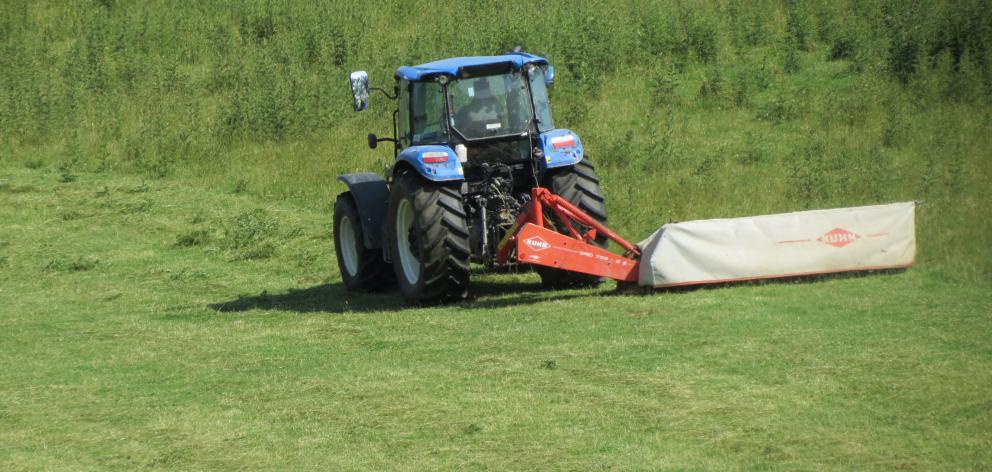
Rural Contractors New Zealand (RCNZ) president David Kean, of Centre Bush, said he had been told the last four months of 2019 had been some of the worst in 20 years for Southland, according to some contractors who had long memories.
‘‘It was diabolical for the amount of rain we had and everything just got water-logged,’’ Mr Kean said.
He said the cold, wet spring conditions meant a lack of growth, and on some farms, what growth was there had to be given to the cows to eat, rather than shutting up paddocks for baleage.
‘‘The cows have to eat,’’ he said.
The paddocks had been wet and in some instances machinery got bogged down.
The poor conditions also meant some contractors were unable to get on to the paddocks as much as in past years, which meant additional cash-flow concerns, financial pressure and stresses in addition to the long hours.
‘‘I don’t think contractors were working for more than four days without getting rained off.
‘‘There were really short windows of opportunity to get things done.’’
However, it had been fine during the past couple of weeks, allowing contractors to get out on the paddocks.
He said the grass was now ‘‘growing crazy’’, although fodder beet and brassica crops were two to three weeks behind and it was too early to predict whether there would be sufficient winter feed for stock.
‘‘That depends on what happens in February and March.
‘‘Southland is always one week away from a drought.
‘‘It can dry out in two weeks and then we can be in dire straits so it is too early to say.
‘‘We are going to have to see where we can catch up.
‘‘If February really dries out, it will stop growing.’’
He said farmers had to look at what they could and could not control.
‘‘They rely on pricing, which is out of farmers’ control.
‘‘The weather we can’t control.
‘‘Bank interest rates are out of our control.
‘‘Health and safety is just out of control.’’
On the other hand lamb and beef prices, and the dairy pay-out all looked positive.
‘‘Southland will get you down but it won’t let you down,’’ he said.
Port Molyneaux dairy farmer Katie Button said the wet, cold season had been challenging.
‘‘We have finally mowed some very overdue baleage paddocks,’’ Mrs Button said.
‘‘We still have the majority of our cows on twice-a-day milking, and we are using silage only made in mid-December to fill the feed gap.
‘‘We are just trying minimise paddock damage and keep the cows full and happy, but it is a challenge with the ground conditions.’’
RCNZ zone four board member and Wanaka Agricultural Contracting Ltd owner Richard Woodhead, said although this spring and early summer had been ‘‘tough and wet’’, with colder, horrible weather, conditions were now drying out.
‘‘However, the heat has come on and the dry north-facing grass is burnt up now,’’ he said.
This allowed contractors to catch up and winter feed crops were ‘‘starting to come away’’.
Contractors were concentrating on harvesting grass and lucerne as well as drilling and cultivation.
‘‘There has been good second cut growth on dryland lucerne, which is better than normal’’.
He said the Maniototo and further north and east were dry, as was Oamaru, which had missed most of the rain other areas had experienced during the past three months.













